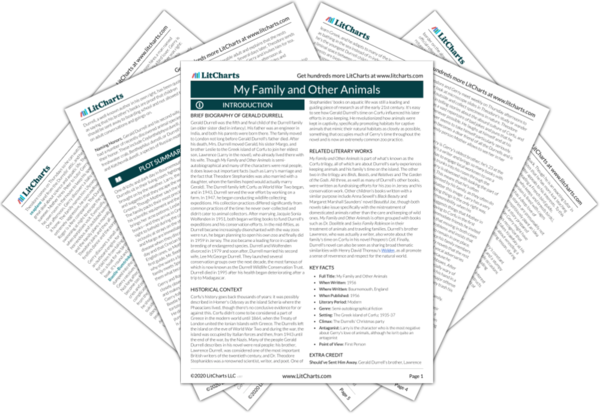Given Gerry's love for all his animals, it seems out of character that he doesn't immediately attempt to separate Geronimo and Cicely. The fact that he doesn't separate them, however, suggests that Gerry understands that he cannot completely control what happens in nature. This again situates nature as something that influences humans, not the other way around, and something that humans must then just learn to coexist with.
